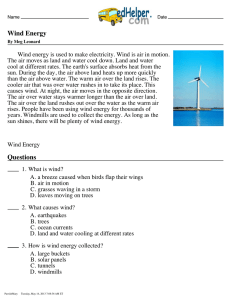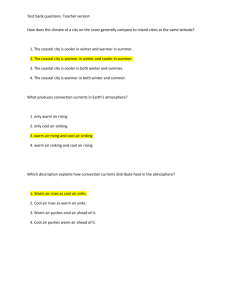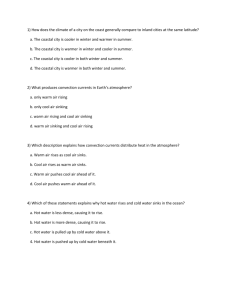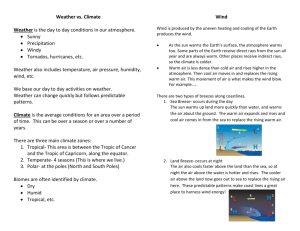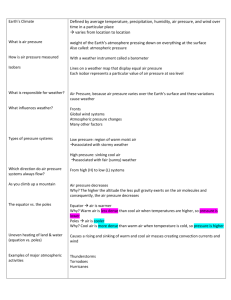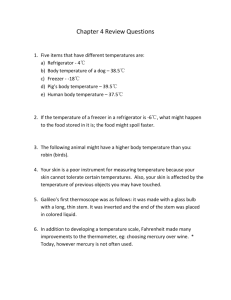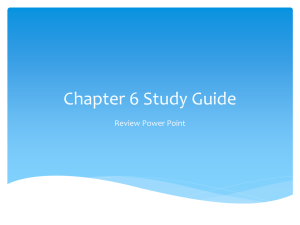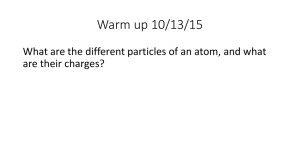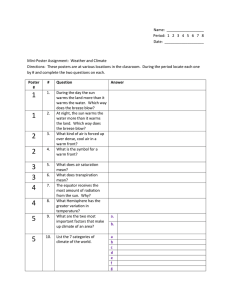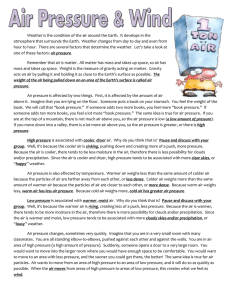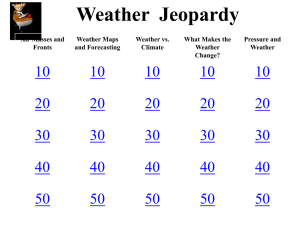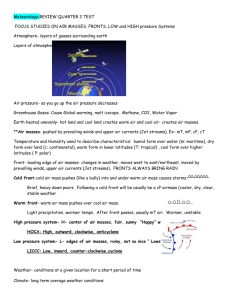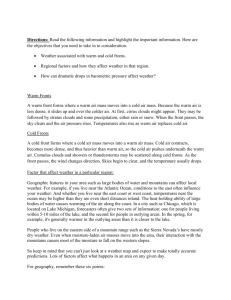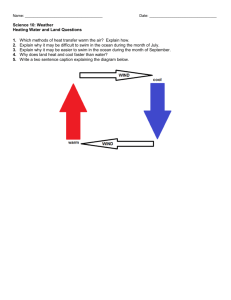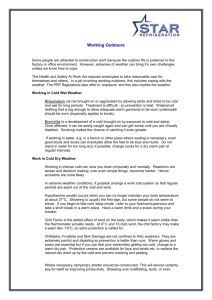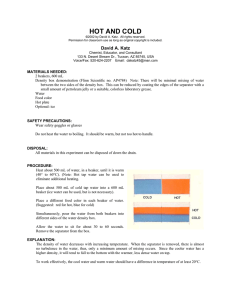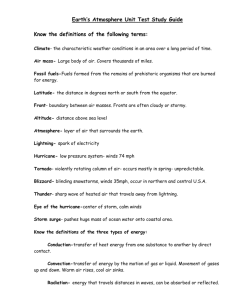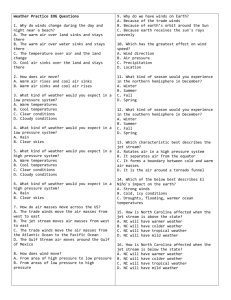What is wind?
advertisement
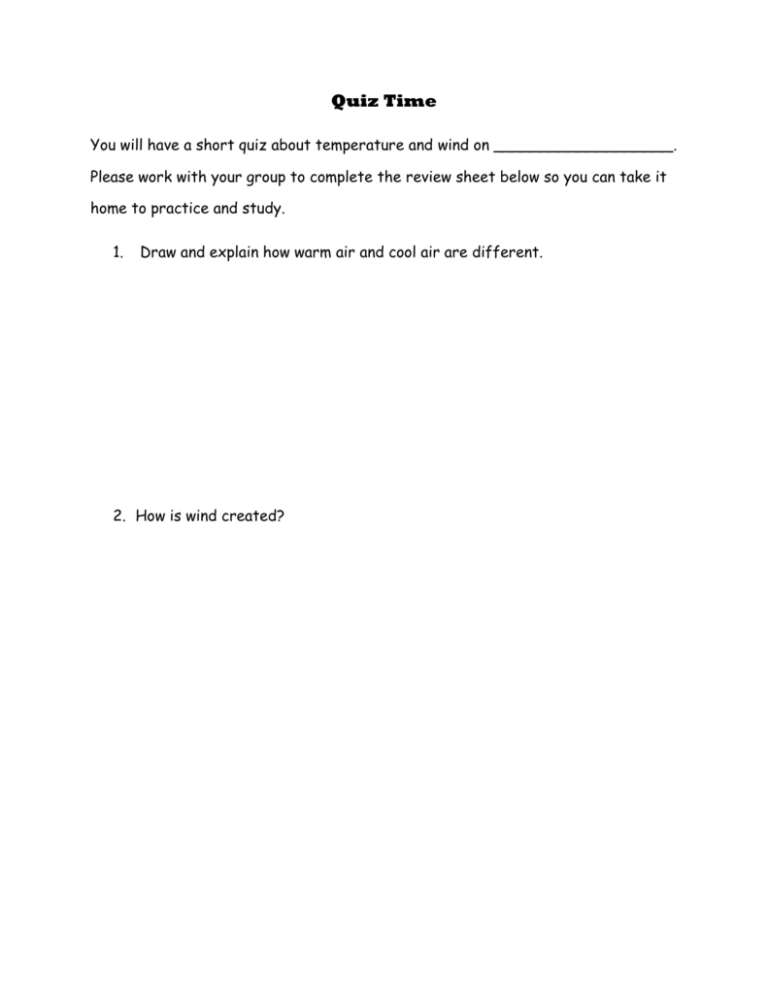
Quiz Time You will have a short quiz about temperature and wind on ___________________. Please work with your group to complete the review sheet below so you can take it home to practice and study. 1. Draw and explain how warm air and cool air are different. 2. How is wind created? 3. Fill in the diagram below showing how air moves in a room. Use red crayon to show warm air and blue crayon to show cool air. 4. What tool is used to measure wind speed? 5. What tool is used to measure wind direction? Measuring the Wind There are two aspects of wind we can measure: wind speed and wind direction. Wind Speed Measuring wind speed is done by a tool called an anemometer (an-uh-mom-iter). The wind (moving air) pushes against the cups and causes them to turn. When the cups turn, they cause a meter to spin, which tells how fast the wind is blowing. Wind Direction When we talk about wind direction, we tell what direction the wind is coming from. For example, when you hear the weather man say, “Today we will have a West wind”, that means the wind is coming from the West and moving toward the East. To show wind direction you will see wind socks or weather vanes. Where’s That Wind Come From? What is wind? Wind is air in motion. It is produced by the uneven heating of the earth’s surface by the sun. Since the earth’s surface is made of various land and water formations, it absorbs the sun’s radiation unevenly. Two factors are necessary to specify wind: speed and direction. What causes the wind to blow? As the sun warms the Earth's surface, the atmosphere warms too. Some parts of the Earth receive direct rays from the sun all year and are always warm. Other places receive indirect rays, so the climate is colder. Warm air, which weighs less than cold air, rises. Then cool air moves in and replaces the rising warm air. This movement of air is what makes the wind blow. Air in Motion Since warm air rises, the upper air in the room will be the warmest. Other places in the room that also may be warmer will be areas exposed to direct sunlight, particularly during the warmer seasons. Darker coloured surfaces in direct sunlight and the areas around the heat vents may also be warmer. The coolest areas will be next to windows during the winter, especially those that face north or west and areas next to exits or doors where drafts occur.
